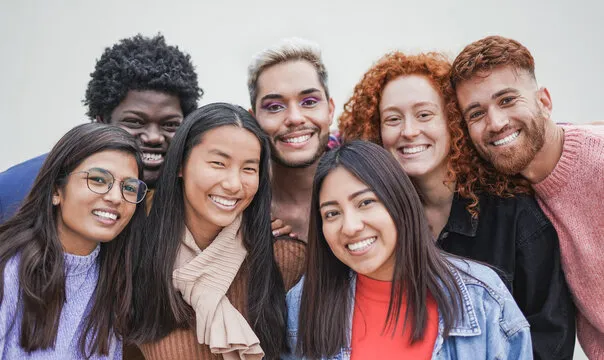How to Create Inclusive Marketing That Everyone Can Understand
In today's diverse and interconnected world, businesses that fail to embrace inclusivity in their marketing efforts risk alienating a significant portion of their potential customer base. Inclusive marketing, the practice of purposefully representing and engaging with diverse audiences, is not just a social responsibility but also a strategic imperative for long-term business success.
Defining Inclusive Marketing
Inclusive marketing is the practice of intentionally representing and engaging with diverse audiences. A successful inclusive marketing campaign goes beyond simple tokenism or adding a few images of diverse individuals to marketing materials. Instead, it involves a genuine understanding and respect for the unique experiences, perspectives, and identities of the target audience. It's about creating marketing campaigns that resonate with people from all walks of life, regardless of their race, ethnicity, gender, sexual orientation, religion, ability, or any other defining characteristic.
Benefits of Inclusive Marketing
The benefits of inclusive marketing are manifold. By embracing inclusivity, businesses can:
⭐ Reach a wider audience: Inclusive marketing expands your market reach to include untapped segments of the population, leading to increased customer acquisition and brand loyalty.
⭐ Enhance brand reputation: Inclusive marketing demonstrates a commitment to diversity and social responsibility, which fosters positive brand perception and customer trust.
⭐ Drive innovation: Inclusive marketing encourages creativity and out-of-the-box thinking, leading to more innovative and effective marketing campaigns.
⭐ Promote a positive social impact: Inclusive marketing plays a role in creating a more equitable and inclusive society, fostering a sense of belonging and empowerment for all.
Key Strategies for Inclusive Marketing
To effectively implement inclusive marketing strategies, businesses should consider the following key approaches:
#1 Know your audience: Conduct thorough research to understand the demographics, needs, and preferences of your target audience. This includes identifying and understanding the diverse segments within your audience.
#2 Build a diverse team: Assemble a marketing team that reflects the diversity of your target audience. This ensures that various perspectives and experiences inform the creative process, leading to more authentic and relatable marketing campaigns.
#3 Use inclusive language: Employ language that is respectful, neutral, and free from stereotypes and biases. Avoid using gendered language unnecessarily and ensure that your language reflects the diversity of your audience.
#4 Represent diversity in imagery: Use images and videos that accurately represent the diversity of your target audience. Avoid tokenistic or stereotypical representations, and ensure that the imagery is culturally sensitive and appropriate.
#5 Consider accessibility: Make your marketing materials accessible to people with disabilities. This includes using alt text for images, providing transcripts for videos, and creating content that is easy to read and navigate.
#6 Engage with diverse communities: Actively engage with diverse communities through partnerships, collaborations, and events. This helps you gain a deeper understanding of their needs and preferences, fostering trust and authenticity.
#7 Seek feedback and iterate: Continuously seek feedback from diverse audiences to assess the effectiveness of your inclusive marketing efforts. Use this feedback to refine your strategies and ensure that your marketing campaigns are truly inclusive and resonant with all segments of your audience.
Inclusive Marketing Examples
Here are 3 examples of inclusive marketing:
🎯 Nike's "You Can't Stop Us" campaign
Celebrating athletes of all abilities, including those with disabilities. The campaign featured Paralympian swimmer Jessica Long, who was born with a rare bone condition that required her to have her legs amputated below the knee. The campaign was widely praised for its empowering message and its representation of diversity in sports.
🎯 Dove's "Real Beauty" campaign
Challenging traditional beauty standards by featuring women of all shapes, sizes, ages, and ethnicities. The campaign was credited with helping to change the perception of beauty and making women feel more confident in their own skin.
🎯 Aerie's "Unretouched" campaign
Featuring photos of models without any retouching or Photoshop. The campaign was praised for its authenticity and its commitment to body positivity.
These are just a few examples of how businesses are using inclusive marketing to connect with diverse audiences. By embracing inclusivity, businesses can not only reach a wider audience but also foster stronger relationships with their customers and drive innovation.
Inclusive marketing is not a one-size-fits-all approach
It requires a continuous commitment to understanding, respecting, and engaging with diverse audiences. By embracing inclusivity, businesses can not only expand their reach and enhance their brand reputation but also contribute to a more equitable and inclusive society.
To summarize, inclusive marketing is not just a buzzword or a passing trend; it's a strategic imperative for businesses that want to thrive in today's diverse and interconnected world. By embracing inclusivity, businesses can foster stronger relationships with their customers, drive innovation, and make a positive impact on society.
Related posts
-

Local SEO in 2025: Optimizing Your Online Presence for the Modern Searcher
Jan 23, 2025 -

The Digital Marketing Landscape of 2025: What’s Likely to Shape the Future
Dec 17, 2024 -

The Growing Importance of Personalization in Digital Marketing
Dec 03, 2024 -

Utilizing Social Media Advertising Platforms for Targeted Campaigns
Nov 19, 2024

Please login to check comments